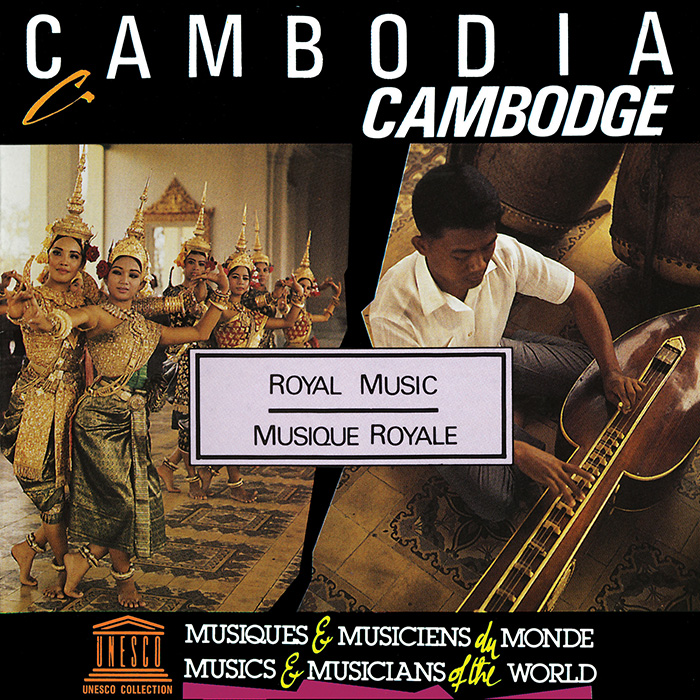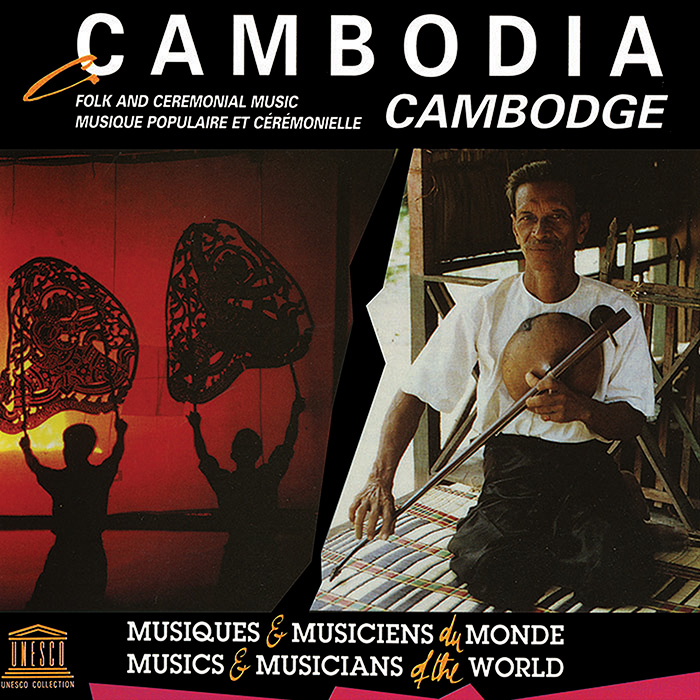-
UNESCO Collection Week 23: The Beautiful Chaos of Cambodian Music
This week we spotlight music from Cambodia in honor of the Mid-Autumn or “Mooncake” Festival from earlier this month (also celebrated in China and Vietnam). The festival is marked by family reunions and moon-watching festivities. The round shape of the mooncake, a pastry made from red bean or lotus seed paste and yolks from salted duck eggs, represents the circle of familial unity. The featured albums for this week are Cambodia: Royal Music and Cambodia: Folk and Ceremonial Music.
GUEST BLOG
By Annie Hammang
I work in an open lab, which means that whatever music you listen to, everyone listens to. Naturally, music selection is a hot issue, and I am one of my workplace’s least popular DJs. (This may be a common concern for other UNESCO Collection of Traditional Music followers; indigenous world music is rarely a crowd-pleaser.) However, Southeast Asian music is the one genre I play that my co-workers like as much as I do. Something about these sounds is universally enticing even if unfamiliar. Bluegrass dads and Top 40 twenty-somethings alike have popped their heads in to ask: “what on earth is this music? Where can I find more?”
Luckily for my colleagues and anyone else intrigued by music of this region, this week’s UNESCO releases are Cambodia: Royal Music and Cambodia: Folk and Ceremonial Music , a great introduction to Southeast Asian music.
It’s difficult to describe the sound of this music. It tickles a different part of my brain than the other music I’ve listened to. According to the liner notes in Cambodia: Royal Music, there is an old adage about Cambodian music: “when musicians play together, each one goes his own way, but they meet together from time to time.” Cambodian orchestras feature oboes, stringed instruments, gong circles, cymbals, xylophones, and open-bottomed drums, each with improvised melodies that only occasionally overlap.
AudioThe structure may seem like chaos, but the instruments all ring with the same delicate, ethereal quality and complement each other naturally. The end effect isn’t chaos but complexity – music that rings nicely in your ears when you are hardly paying attention and can subsume your whole consciousness when you start following the threads of melodies that weave into each other in unpredictable ways.
These two albums explore different corners of the Cambodian sound. Cambodia: Royal Music exclusively features the Orchestra of the Royal Palace, an ensemble of musicians groomed for a life of music under the care of the royal court in Phnom Penh. The pieces echo the ornate productions from the ancient Khmer Empire between the ninth and fifteenth centuries, known as the “Golden Age” of Cambodia. These events featured hundreds of musicians alongside thousands of dancers. The arrangements in this album are of modest proportions compared to the ancient music traditions they strive to preserve, but the result is still grand.Cambodia: Folk and Ceremonial Music casts a wider net to capture regional sounds. Several musicians and orchestras contributed to the album, and the tracks range from wedding songs to shadow theater accompaniment to battle marches. Songs like “Chapey Solo”showcase an earthier, stripped-down sound of a solo stringed instrument, while tracks like “Phleng khlom” feature the other end of the spectrum: heavily embellished, urban compositions of gamelan‐like pinpeat orchestras with xylophones, metallophones, cymbals, reed flutes, and large drums.AudioAudioThere is also an important cultural context to consider with these albums. While so many musical traditions are threatened, or at least rapidly changing under the pressures of globalization, Cambodian music has surmounted even greater challenges. Cambodia and its culture have been subjected to a century of civil unrest, including a cultural revolution from the Khmer Rouge that specifically aimed to destroy “cultural baggage” of the past. These albums, in fact, were compiled just before the start of the party’s reign. This week’s UNESCO Collection releases feature more than an underappreciated genre of music; they feature unadulterated recordings of a currently endangered one.
Annie Hammang
Associate Scientist - Amyris BiotechnologiesUNESCO Collection Week 23: The Beautiful Chaos of Cambodian Music | Smithsonian Folkways Recordings



